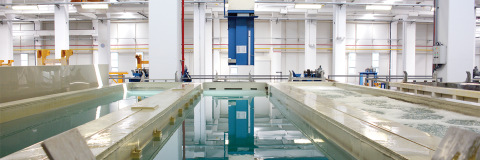On January 29, 1886, Carl Benz applied for a German patent on his “vehicle powered by a gas engine”.(1) Benz was awarded patent number 37435, widely regarded as the pivotal moment marking the "Birth of the Automobile." Later that year in July, the Benz Model 1 was unveiled and demonstrated on its first drive in Mannheim, Germany, topping out at a speed of 16 km/h (10 mi/h).(2) Almost 23 years later, in 1908, the first Ford Model T rolled off the production line in Detroit, Michigan.(3) In the decades following those historic events, internal combustion engine (ICE) automobiles have become ubiquitous, and at their peak in 2017, there were more than 86 million new vehicles sold worldwide.(4) But the world is currently in the midst of transformation in this market as new ICE vehicle sales have decreased steadily since 2017 and given way to a new approach to the mobility market, namely the electric vehicle (EV). To emphasize the notion that EVs are here to stay, EV unit sales are projected to top 17 million and will account for almost 33% of global automobile sales by 2028, potentially reaching more than 54% by 2035.(5) With their promise of zero emissions, improved efficiency and reduced dependence on fossil fuel, electric vehicles are quickly becoming the centerpiece of a multifaceted approach to a cleaner and greener future.
This shift has required considerable innovations and thus has driven significant change in the components and systems used in EVs. To demonstrate the nature of this change, the removal of the internal combustion engine is accompanied by the elimination of components such as fuel storage and transport systems, exhaust systems and conventional transmission systems, among others. The obvious implication for the metal finishing industry is the individual parts used in these components are eliminated and therefore coatings traditionally used to improve performance of these parts are no longer required. But with new systems and components comes new opportunities to use finishing technologies to improve functionality and performance.
Electroless nickel phosphorus (ENP) as a coating has been a staple in the automotive industry for decades, accounting for a significant portion of ENP use by market type. Applications such as piston heads, carburetors and fuel injection components, slip yokes and transmission components are only some examples of where ENP is used. This is primarily because of its superior wear and corrosion resistance and ability to plate complex geometries uniformly. Even though these aforementioned applications will observe decreased volumes because of the transition away from the ICE, the properties of ENP are making it a coating of choice for engineers who are pioneering new technologies in EVs. In fact, EVs present exciting new opportunities for additional growth of ENP in the automotive market for several critical components used in electric vehicles. Here we will explore only a few.
- Thermal management devices for power electronics components
- Busbars for power distribution and transmission
- Connectors for interconnectivity of subsystems
- Compressor scrolls for air conditioning or heat pump systems
Heatsinks
Heat generated, as a result of inefficiencies in the conversion of electrical energies in power electronics components, creates a great need for dissipation and transfer to avoid negative consequences associated with overheating. This is commonly accomplished through the use of liquid cooling (typically with glycol/water mixtures) with heatsinks to facilitate heat transfer. These heatsinks can be of varying geometries but typically take on very complex shapes to increase surface contact area with the coolants, and at times are even contained in housings to isolate the contact areas and improve component functionality with respect to the rest of the system. Typically, these heatsinks are fabricated from copper or aluminum-based substrates and thus require some coating to provide a level of corrosion resistance as contact with these coolants, especially at elevated temperatures, can cause surface degradation and pose potential problems. Electroless nickel is an ideal coating to meet this requirement due to its ability to be uniformly applied across these very complex geometries and its highly corrosion resistant barrier nature, especially in the case of high phosphorus electroless nickel (>10.5% w/w P).
Busbars
The transport of high voltage electric power from the batteries to various subsystems is one of the most important considerations in electric vehicles. This is typically accomplished by busbars, thick strips of aluminum or copper which have low electrical resistance while drawing high amperage current, leading to minimal heat buildup. These are fabricated to conform to specific geometries and ENP can be applied to the leads or ends of the busbars to prevent oxidation and corrosion, while improving the wear resistance, thus reducing the risk of damage or degradation due to mechanical abrasion. ENP, especially low phosphorus (<3% w/w P), delivers the ideal combination of hardness and solderability while also providing a relatively inert barrier layer to enhance performance of these critical components.
Connectors
Connectors is a general term assigned to various parts in an electric vehicle that serve as an interface for electrical connections between various components. These components are designed to transmit power, signals and data throughout the subsystems. ENP is often used as a coating of preference because of its high corrosion resistance, preventing corrosion by-products which could potentially inhibit power transfer and lead to electrical shorts. Additionally, ENP, as a relatively hard deposit, is also well suited for the mating and unmating of connector components without degradation. With its low electrical resistance and ability to deliver high wear resistance, ENP is also used as a coating for pins and posts in various connector assemblies.
Compressor scrolls
As previously mentioned, low phosphorus ENP (<3% w/w P) is a relatively hard and wear resistant coating that can be subsequently heat treated after plating to further enhance these properties. Due to this, ENP is used as a coating of choice for compressor scrolls in the environmental control systems of electric vehicles. The frequent and intimate contact of the components during the compression of refrigerant gases requires the use of a hard and wear resistant coating, and the relatively complex geometries these scrolls take on make ENP suitable to satisfy the demands of these parts.
EVs will continue to overtake ICE vehicles in the coming years. This must come with the recognition that the innovations associated with the new technologies used in EVs present opportunities for the metal finishing industry at large. Engineers working in this space already recognize the unique and attractive properties that ENP offers and are thus adopting the technology accordingly at an increasing frequency.
Read the full article, available now on pfonline.com
Sources
1. (Retrieved 2024, Mar 13). https://group.mercedes-benz.com/company/tradition/company-history/1885-1886.html#:~:text=On%20January%2029%2C%201886%2C%20Carl,1.
2. Deffree, S. (2019, Jul 3). Karl Benz Drives the First Automobile. https://www.edn.com/karl-benz-drives-the-first-automobile-july-3-1886/
3. (Retrieved 2024, Mar 13) "Chronicle of 1908". Library.thinkquest.org. 1908. Archived from the original on February 11, 2013.
4. Harris, O. (2023, Dec 21). The Evolution of Vehicle Sales: Combustion Vehicles on the Decline! https://www.linkedin.com/pulse/evolution-vehicle-sales-combustion-vehicles-decline-omar-harris-85r6c/
5. Lienert, P. (2022, Jun 22). Electric vehicles could take 33% of global sales by 2028. https://www.reuters.com/business/autos-transportation/electric-vehicles-could-take-33-global-sales-by-2028-alixpartners-2022-06-22/











